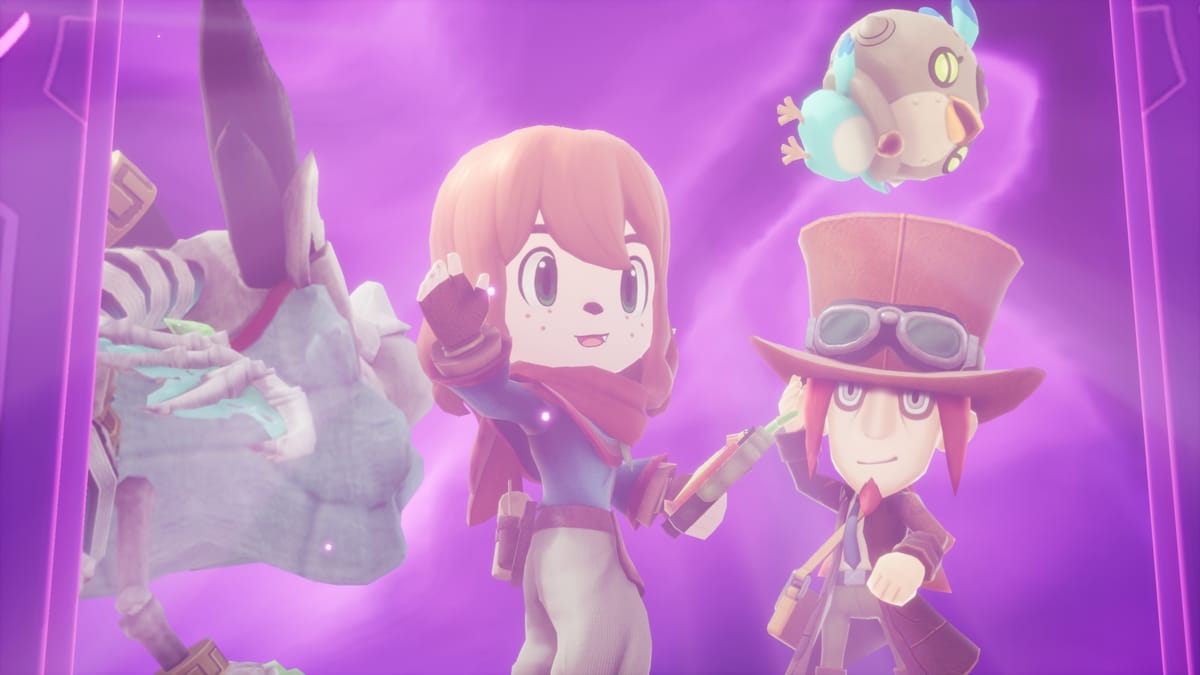
A lot of games out there try to be everything to everyone, and fail spectacularly. In most cases, it’s just not feasible to create a game that is a massive open world action RPG, farming sim, city builder, and life sim all at the same time. And yet, Fantasy Life pulled it off back on the 3DS. Before that, Dark Cloud 2 achieved something similar, albeit with different genres such as golf, on the PlayStation 2. Now in 2025, Fantasy Life i: The Girl Who Steal Time shows us that, for developer Level-5, the third time’s the charm.
In Fantasy Life i, you’re an assistant archaeologist to Professor Edward, following a light emitted by the fossilised remains of a dragon. Just before you reach your destination, another dragon appears, and your skeleton dragon reanimates to fight it. Unfortunately, your dragon is outmatched, and takes you through a mysterious portal to 1000 years in the past to the Kingdom of Mysteria. From there, you’ll take up a profession called a Life and use those new skills to unravel the secrets of the past, present, and another world.
It’s an interesting set up for a story, once again very reminiscent of Dark Cloud 2, but plot is far from the focus on Fantasy Life i. It’s mostly a vehicle to bring you to each of the game’s locations, show you the ropes, and introduce you to all of its systems at a steady pace. It does that fairly well, but fumbles in two major ways. The localization feels lacking at times, with some very strange sentence structure and clumsy phrasing. It’s clearly faithful to the original Japanese script, but it failed to keep me invested from moment to moment.
It also feels like a third of the story is just missing. There’s a part where a major character gets kidnapped, but you pretty much immediately rescue them, and then they tell you about a bunch of plot points they suddenly remembered. From there, you’re just barreling towards the end. Yet I can’t help but feel there had to be a more elegant way to handle that without affecting the brisk pace of the story. I finished the game in just under 25 hours, and that was with plenty of fooling around with the game’s various Lives.
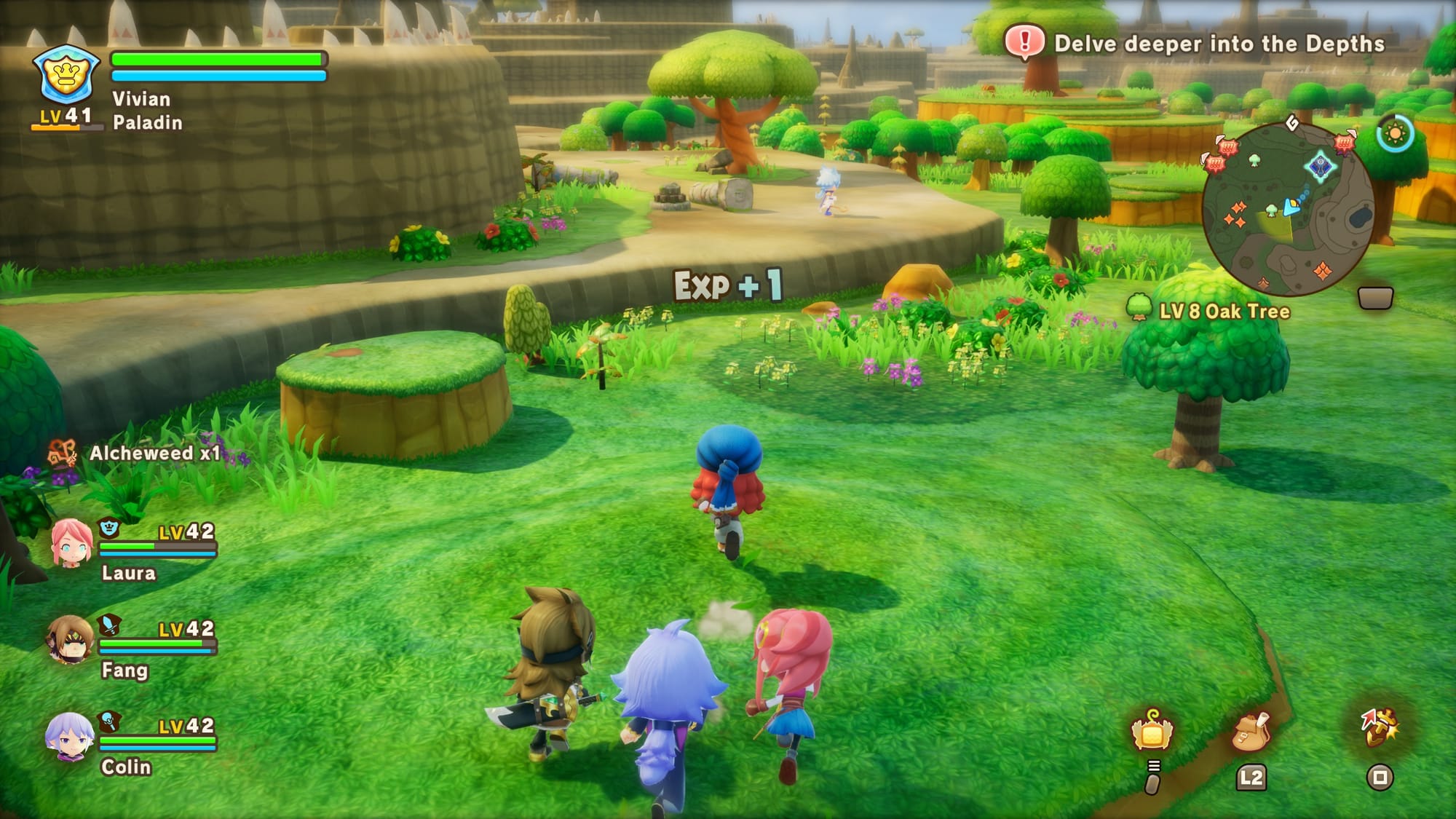
That fooling around is the real focus of Fantasy Life i, and it’s a blast. I may not be as addicted to it as others, but it always feels like there’s something to do. Let’s say you want a new sword for your Paladin Life, and you have the recipe for a really good one but not the materials. From the recipe, you can see where each material is, use gathering Lives like Miner, Angler, Woodcutter, and Farmer to gather them. Once you have everything, you can head to a crafting bench to play a minigame to craft the sword and, what do you know, that was just enough quests to rank up your Blacksmith Life and unlock a bunch of new recipes. Some of those recipes require drops from monsters, so it’s a good thing you just made that brand new sword!
The game is constantly going in satisfying loops like this, pulling you in 1000 different directions that all make the other 999 tasks easier to accomplish. The snowball effect is very real here, and once you get in a groove it can be hard to stop. I may not want to play the game constantly, but I love chipping away at things for a while, which makes the game a perfect fit for the Steam Deck. It’s an easy enough game to run too, reaching a fairly constant 60 fps there while my PC can hit up to 170. Unfortunately it does eat the battery of the Deck super quickly, or at least it felt like it did, so be prepared to put the game down for a bit if it needs a charge. Fantasy Life i does support cross save, so you could theoretically just pick up exactly where you left on another device, such as the Switch or upcoming Switch 2 version.
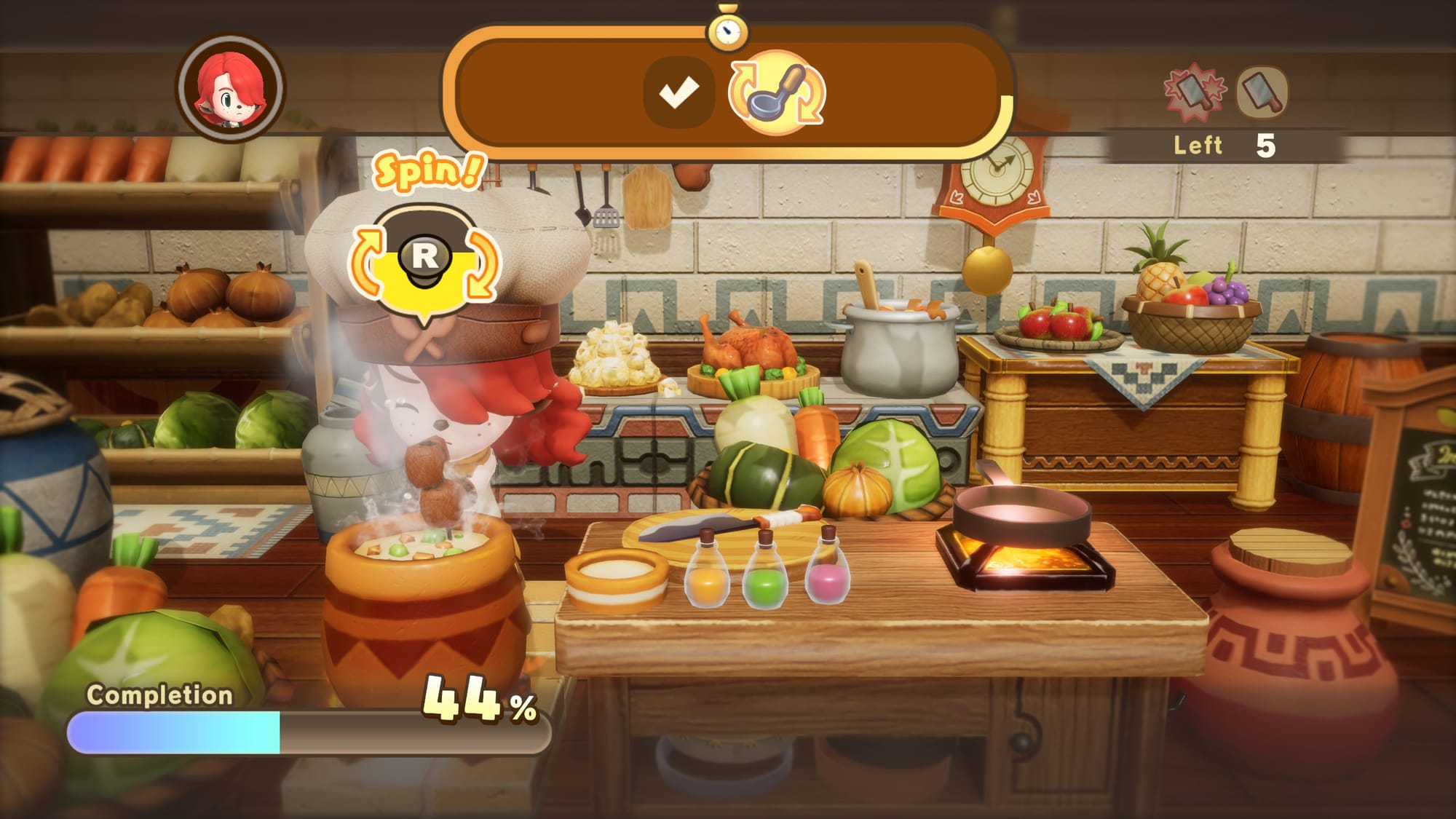
The original Fantasy Life had three save slots, but you only get one here. I assume this is because of the focus on multiplayer, but it still largely feels like a single player game. You can’t play through the main story with a party of friends, which is unfortunate as stuff like the final boss feels designed for four real players rather than one with a party of dumb as rocks NPCs. Then again, the focus really isn’t on the main quest here, and you’re able to complete dungeons and roam around the open world with other players.
Did I mention there’s an open world? In addition to the past’s five or so islands to explore, the present’s sprawling dungeon and buildable town, there’s just a massive open world sitting there for you to explore. The aptly named Ginormosia is basically your one stop shop for materials, with tons of enemies and gathering spots scattered everywhere. As you explore each zone of the world, you can change the level of that zone by gaining enough points and interacting with a giant eyeball statue. So if you need a lower level kind of wood but the area is currently at level 50, you can simply turn it down for a bit and get what you need. There are often multiple ways to get any material or item, which is super convenient.
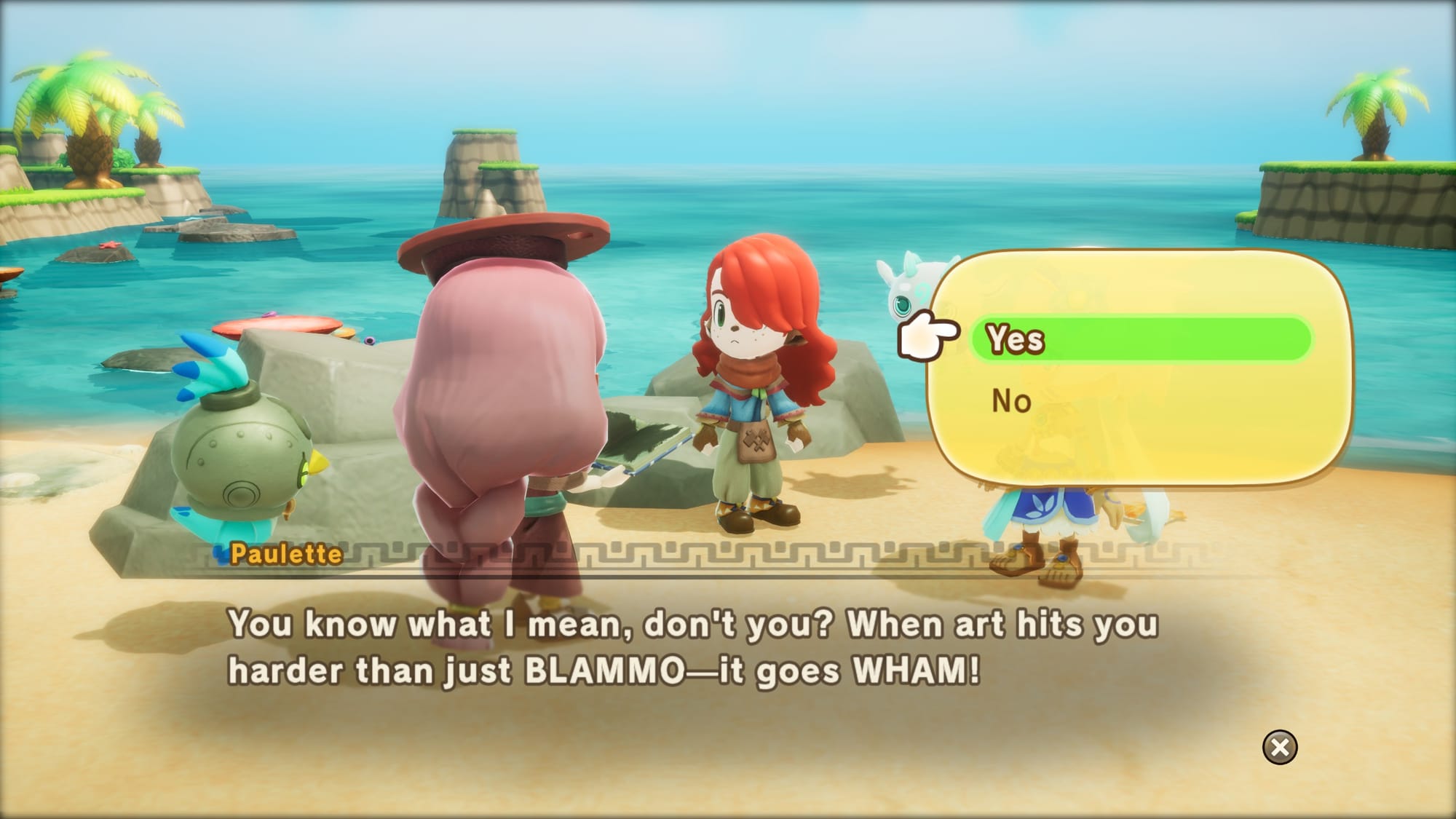
Gathering those materials is more of a numbers game than skill, however. Each gathering Life has its own minigame associated with it, but they’re basically all the same. You move your character or a cursor in a circle around whatever you’re gathering, checking for Sweet Spots where you’ll deal more “damage”. These spots can move after a certain amount of hits, but that’s largely just for boss gathering spots. (Yes, a really tough rock counts as a boss, and will trigger the boss music composed by Nobuo Uematsu. It’s incredible.) Once you find a Sweet Spot, you hit it with light, heavy, or charge attacks until the thing bursts into a cloud of usable materials.
You’ll know early on if you can’t handle gathering something, as your stamina will be depleting faster than the spot’s HP. You can’t restore stamina by yourself without resetting the gathering point, which can make leveling up gathering Lives a bit tedious. In multiplayer, a local partner can restore your stamina a bit, or players could take turns gathering and restoring SP, which makes gathering just about anything easy. Not being able to do this in single player can feel a bit annoying though once you know this.
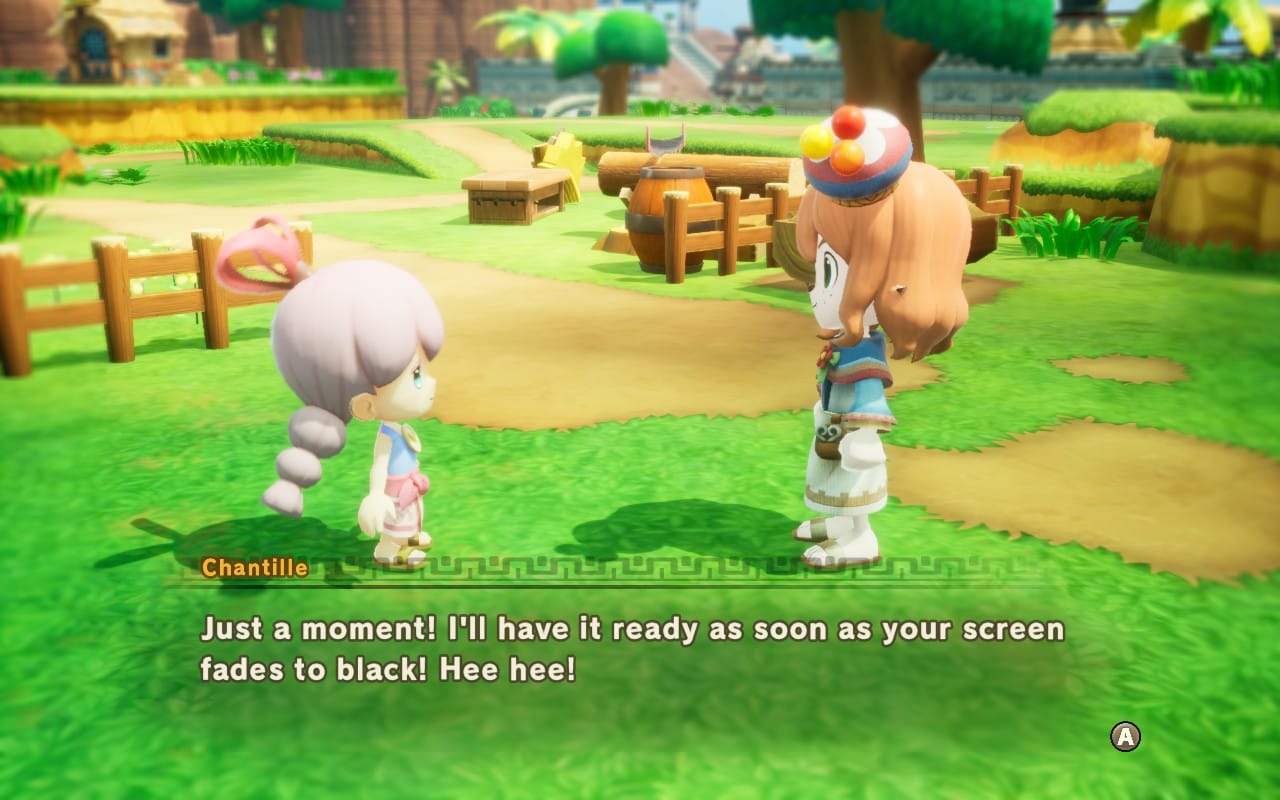
Crafting Lives, likewise, all share the same minigame with different flavors. You move left and right between three stations as the icons at the top of the screen demands, pressing, holding, and mashing the button to progress. (Rarely you’ll also need to rotate the right stick.) The faster you complete each set of tasks, the more the progress bar will increase and the higher quality the final product you make will be, sometimes even letting you create multiple in one go with fewer materials. It’s surprisingly addicting, and very satisfying to perfectly craft something.
Finally, combat Lives are all, once again, fairly similar. The Paladin and Mercenary have you hit enemies in melee range with one of two sizes of sword, while Archer and Mage are both ranged. While Mage is the only Life that deals magic damage, all of them have you mashing the attack button, pressing the heavy attack button for crowd control, and pressing R1 for a unique action. The Paladin blocks with their shield, the Mercenary increases their attack power temporarily, Archers can use a special dodge and change arrow types for status effects like poison, and Mages can decrease SP costs or swap between different types of helpful magic like healing. There’s only one part of the game where magic damage is preferred over physical, but otherwise you can just pick the one you like and stick with it the whole game or level them all as you please. Whatever you do, you’re always making progress.
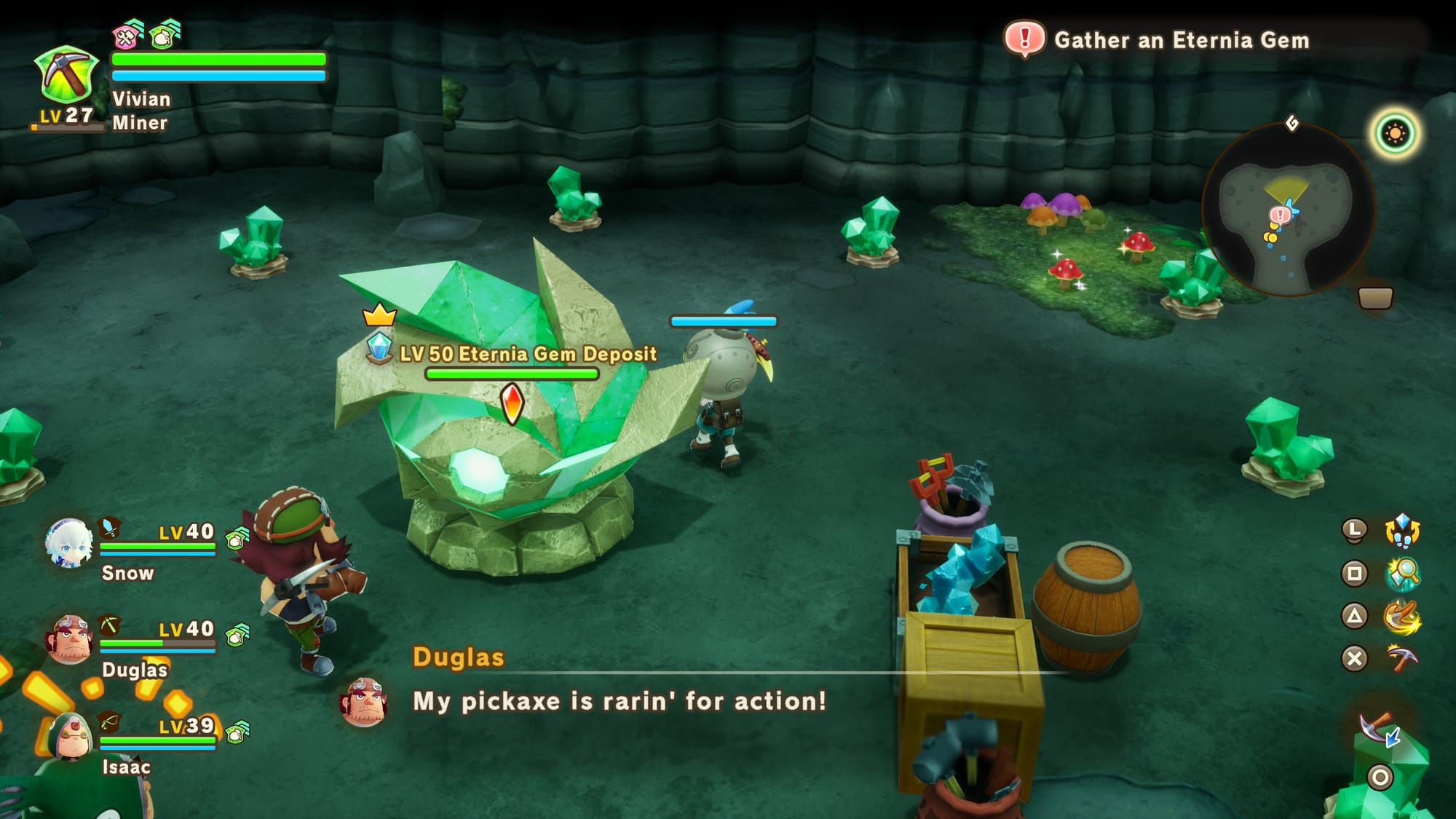
Really, it feels like you could trip and still make progress in Fantasy Life i. It’s a lighthearted, laid back game that really lets you do whatever you want, whenever you want. I love town building stuff, so I was excited to try that again here. It’ll take a lot more materials to get my town where I want it, but it’s satisfying to see it come together bit by bit. It is a bit frustrating that you have to wait so long to get all the terraforming and building tools, and that it takes a second to load in and out of build mode, but I love arranging houses and laying paths to look just right. There’s certainly more functionality to your town, like placing crafting stations, befriending party members, or planting crops, but I do wish there were some shops or things like that I could place as well, just to make it feel more like a town.
Fantasy Life i: The Girl Who Steals Time
Great
Fantasy Life i: The Girl Who Steals Time is oozing with charm and bursting with activities. While it all feels a little shallow, the constant feeling of progress is great and there’s a ton to customize. The story isn’t great, but it doesn’t need to be when there’s always something to do around the next corner.
Pros
- Incredibly charming
- Packed with things to do
- Fantastic music
Cons
- Lackluster story and writing
- Only one save slot
- Can feel pretty shallow
This review is based on a retail PC copy provided by the publisher.
